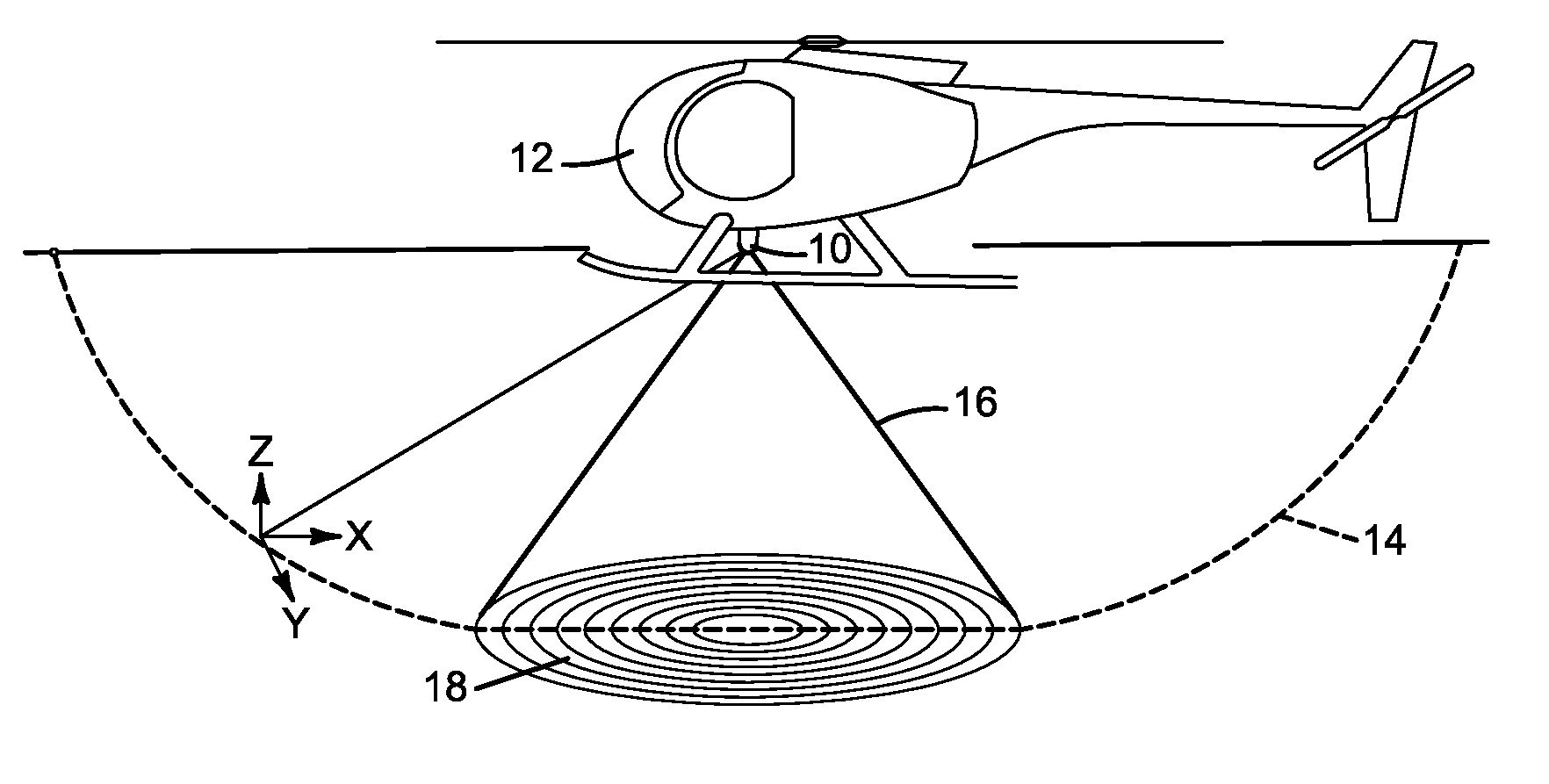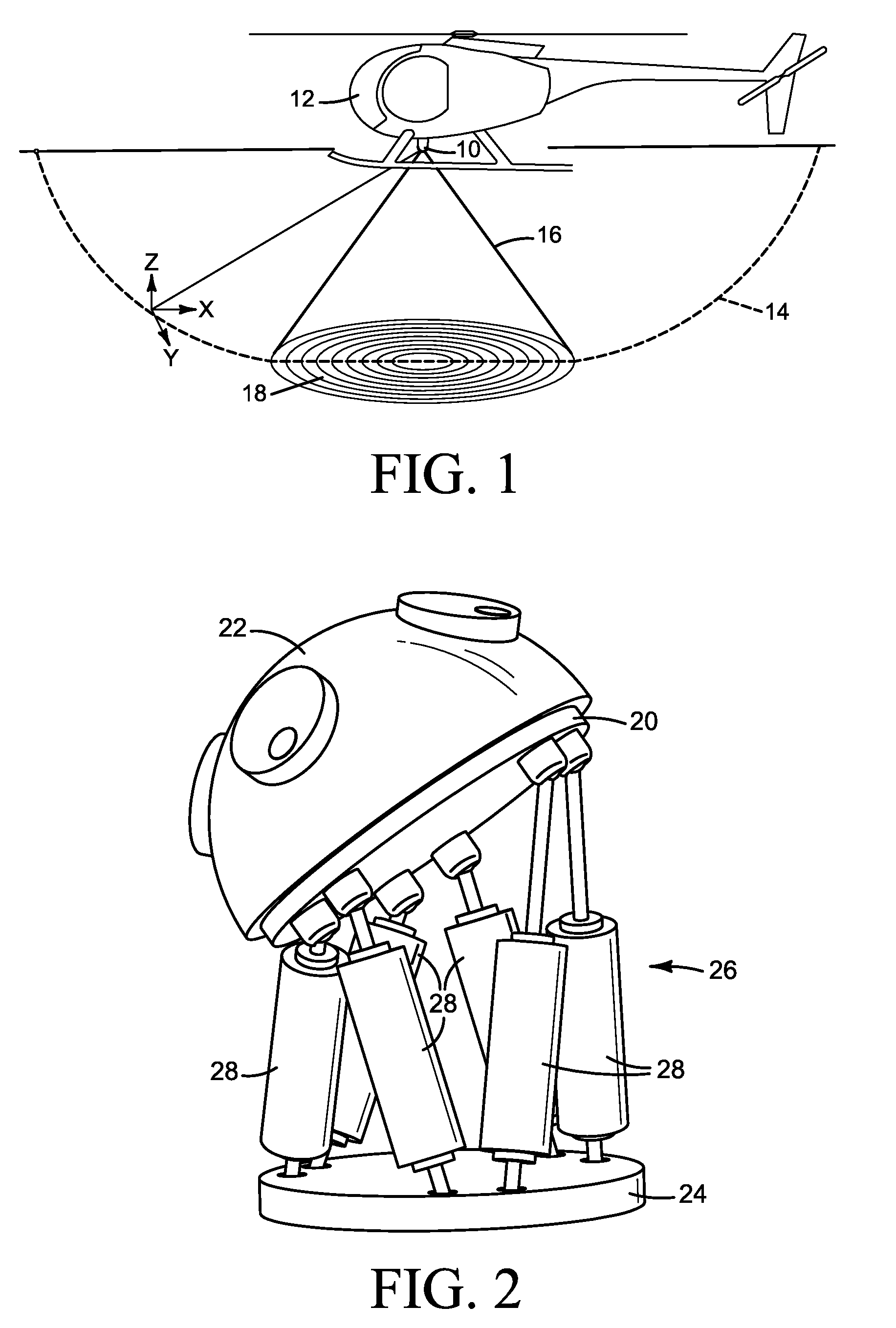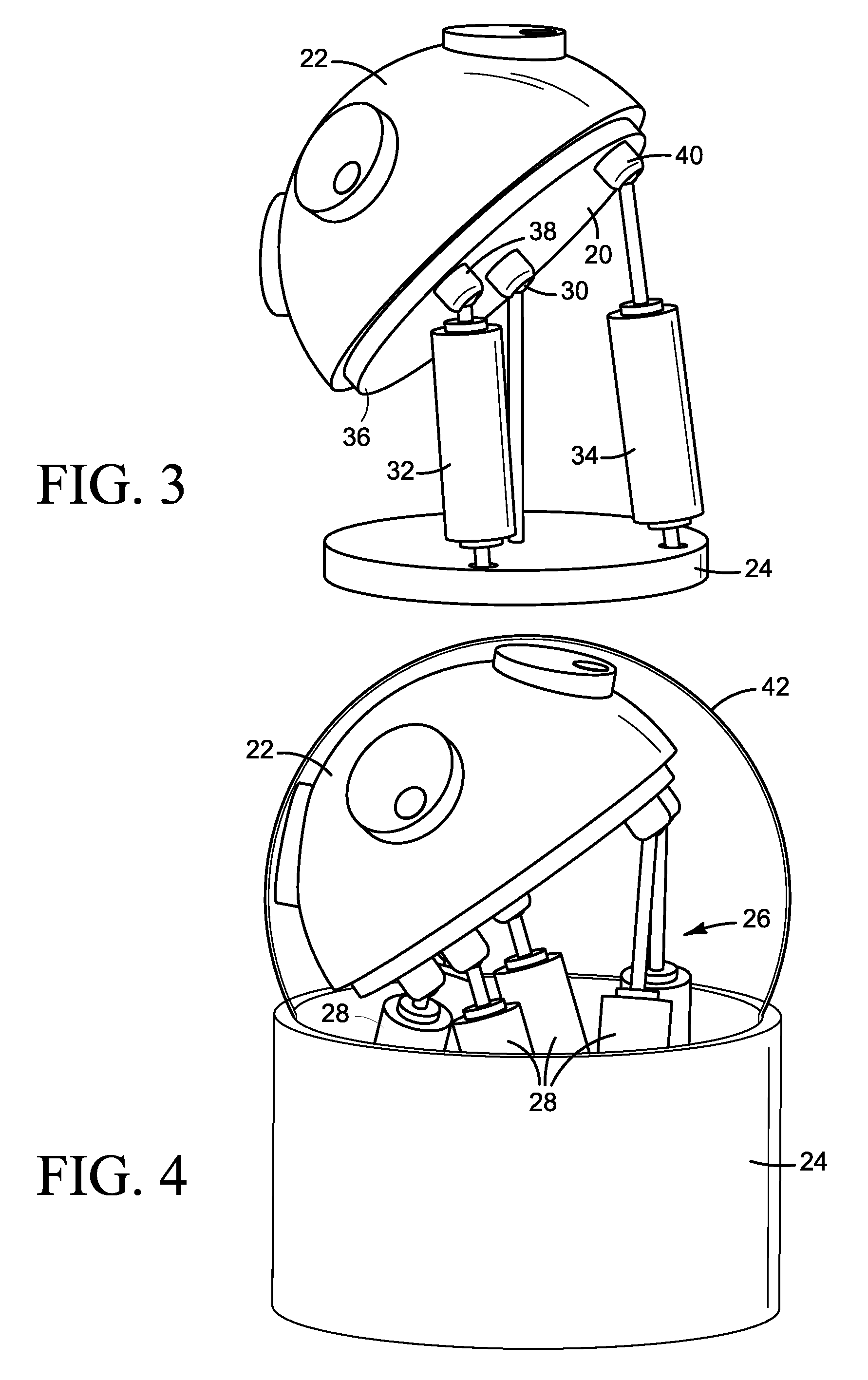Scanning array for obstacle detection and collision avoidance
a technology of collision avoidance and scanning array, which is applied in wave based measurement systems, instruments, and using reradiation. it can solve problems such as cable strikes, antennas, pylons,
- Summary
- Abstract
- Description
- Claims
- Application Information
AI Technical Summary
Benefits of technology
Problems solved by technology
Method used
Image
Examples
Embodiment Construction
[0049]While the invention is susceptible of various modifications and alternative constructions, certain illustrated embodiments thereof have been shown in the drawings and will be described below in detail. It should be understood, however, that there is no intention to limit the invention to the specific form disclosed, but, on the contrary, the invention is to cover all modifications, alternative constructions, and equivalents falling within the spirit and scope of the invention as defined in the claims.
[0050]Several preferred embodiments of the scanning array of the invention are shown in FIGS. 1-18. FIG. 1 shows an example of the scanning array 10 of the invention, attached to a vehicle 12, which in this case is a helicopter. As noted above, the The scanning array can also be a stand alone unit, or attached to a building, or used with any number of different kinds of vehicles, such as helicopters, fixed wing aircraft, jeeps, tanks, trucks, and watercraft such as surface vehicle...
PUM
| Property | Measurement | Unit |
|---|---|---|
| Distance | aaaaa | aaaaa |
| Wavelength | aaaaa | aaaaa |
| Energy | aaaaa | aaaaa |
Abstract
Description
Claims
Application Information
 Login to View More
Login to View More - R&D
- Intellectual Property
- Life Sciences
- Materials
- Tech Scout
- Unparalleled Data Quality
- Higher Quality Content
- 60% Fewer Hallucinations
Browse by: Latest US Patents, China's latest patents, Technical Efficacy Thesaurus, Application Domain, Technology Topic, Popular Technical Reports.
© 2025 PatSnap. All rights reserved.Legal|Privacy policy|Modern Slavery Act Transparency Statement|Sitemap|About US| Contact US: help@patsnap.com



